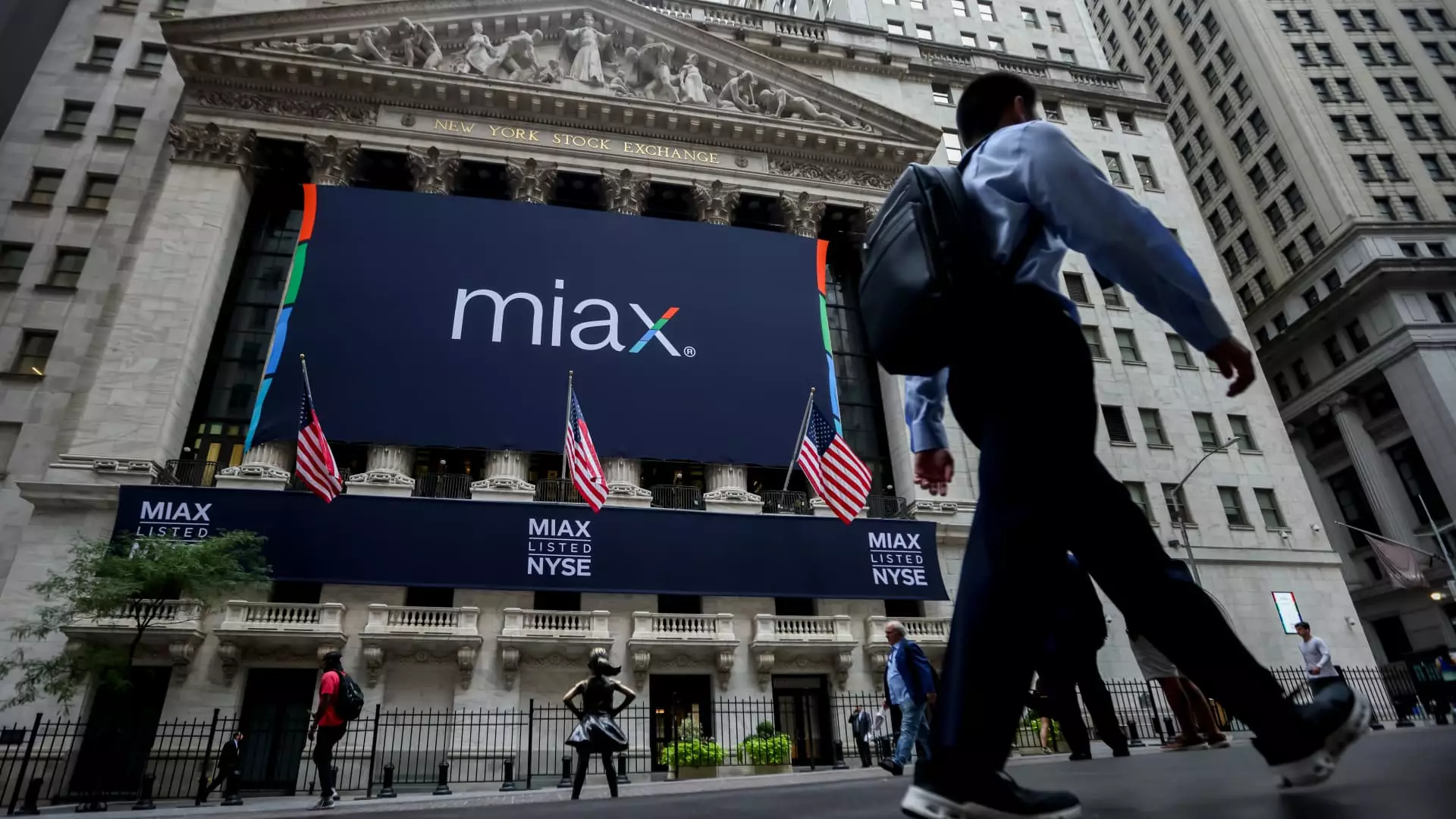In an era where skepticism often clouds investor judgment, Miami International Holdings’ stunning 43% surge at its debut provides a compelling narrative about the current market dynamics. The company’s decision to price its initial public offering at $23 and then close above $31 signals a booming appetite for new listings, especially those with a foundation rooted in financial infrastructure. While some might argue this rally is driven by a natural thirst for growth opportunities, I see it as a reflection of overconfidence—a potential bubble inflating on the back of investor greed rather than solid valuation. It raises the question: is this enthusiasm justified, or is it a reckless chase that could burst in this unpredictable economic environment?
Media Giants and Their Rollercoaster: The Double-Edged Sword of Popularity
Paramount Skydance’s dramatic swings—rallies of 37% followed by a 6% decline—highlight the fickle nature of media stocks in today’s volatile market. The recent surge suggests investor optimism about its media assets and content pipeline, but the subsequent retreat underscores underlying fragility. The entertainment industry lives on volatile expectations; just as a hit movie can skyrocket a company’s prospects overnight, poor earnings or shifting consumer tastes can erode gains rapidly. The lesson here is that media companies, despite their flashes of brilliance, remain high-risk endeavors that can turn sour almost as quickly as they rise—especially in an era where streaming wars and content fragmentation threaten profitability.
The Hidden Cracks in Industrial and Consumer Staples
Amcor’s dramatic 14% drop reveals how even traditionally stable sectors are not immune to global headwinds. Missing analyst estimates and disappointing outlooks expose vulnerabilities—cost pressures, uncertain demand, and softening full-year guidance paint a concerning picture. Similarly, Advance Auto Parts’ fall of over 9% signals that even the resilient auto parts market cannot escape the wrath of economic slowdown or inflationary pressures. These declines serve as a stark reminder that consumer staples, often considered safe havens, are increasingly subject to macroeconomic forces that threaten to diminish their typical defensive qualities. Investors should steel themselves for a period of heightened uncertainty, where safety may no longer be guaranteed simply by sector classification.
Tech and Semiconductor Meltdowns: A Reflection of Overhyped Gains?
Despite some optimistic notes from UBS on SiTime, the broader technology sector continues to unravel. From Ibotta’s staggering 32% decline due to missed earnings to Coherent’s 24% plunge on margin disappointment, the tech landscape is riddled with obstacles. These swings reflect a sobering reality: market enthusiasm for growth tech is waning as valuations become unsustainable, and investors are recalibrating their risk appetite. Semiconductor companies like Coherent show that even those with a solid tech backbone face margin erosion and revenue pressures, questioning the durability of their growth stories. It appears that the overheated tech rally is cooling fast, exposing the underlying fragility of the sector’s lofty expectations.
Resilient or Overconfident? Sector Leaders and the Future of Defense and Fintech
Conversely, some stocks like Kratos Defense and DLocal demonstrate resilience amid chaos. Kratos’ modest 2% gain after an upgrade underscores the underappreciated opportunity in defense spending, especially as geopolitical tensions persist. DLocal’s impressive 23% surge following record earnings highlights the burgeoning appeal of fintech companies that are innovating within emerging markets. These companies, bolstered by strategic upgrades and bullish analyst reports, are becoming the new safe bets amidst widespread decline elsewhere. Their performance suggests that while the broad market trembles, select companies with strong fundamentals and growth catalysts can still thrive—and potentially lead the charge into a more stable yet opportunistic future.
While this tumultuous period exposes vulnerabilities across sectors, it also reveals the often overlooked nuance: markets are inherently unpredictable, and overconfidence in any sector can lead to swift downfall. Investors and analysts must temper their optimism with realism, understanding that today’s giants, whether in media, industrials, or tech, can quickly become tomorrow’s cautionary tales. The current landscape demands vigilance, skepticism, and a willingness to adapt before the next wave of volatility washes away the recent gains.

